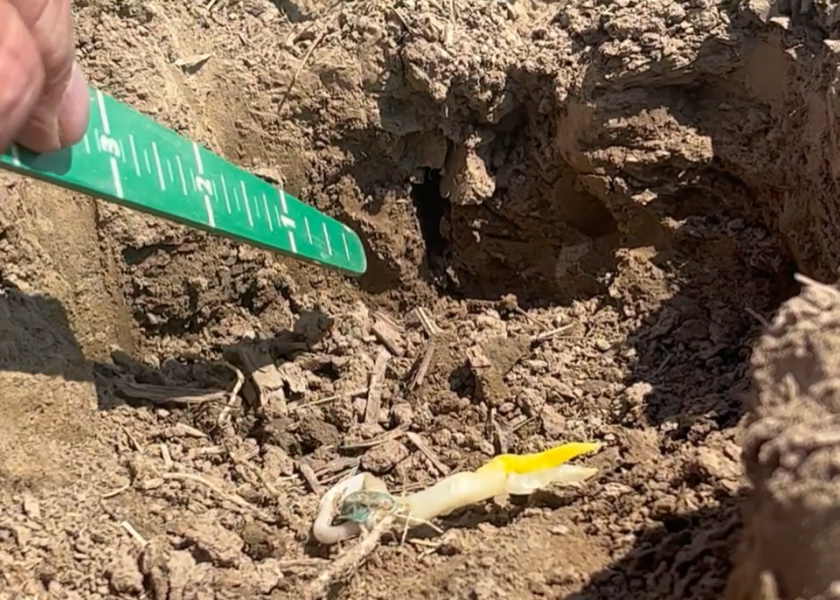4 Reasons Your Corn Crop Leafed Out Underground This Spring

If you’re scouting corn and see the crop is leafing out underground, there are multiple reasons why that occurs, according to Ken Ferrie, Farm Journal Field Agronomist. Now is a good time to evaluate what contributed to that issue so you can prevent its occurrence next season.
Here are four of the most frequent scenarios Ferrie is seeing in the field this season.
1. The most common contributing factor is the crop was planted into cold soils, which resulted in seed chilling.
“When that occurs, it typically causes the spike to circle the seed and corkscrew in the ground,” Ferrie says.
The exact minimum soil temperatures that will cause corkscrewed development are not clearly documented, but it is not uncommon in parts of the central Midwest for daily soil temperatures to dip as low as 40 °F during April and early May.

Nielsen details a variety of factors that can prevent good corn seedling emergence in his online article Emergence Problems In Corn.
2. A crust forms post-planting that won’t allow the spike to emerge.
“The spike pushes up against the crust, but it can’t make it out and then blows out the side,” Ferrie explains. “You'll see a lot of swelling in the mesocotyl when that takes place.”
3. Herbicide damage takes a toll on the seedling.
“That would usually be from your (alachlor) type chemistry, which will cause the spike to rupture,” Ferrie says. “When that happens you won’t see a lot of swelling, it will just open up.”
That can happen in a number of ways. In a dry year, like the current one in central Illinois, one of the things that commonly occurs is when the depth wheels aren't tight against the disc opener, and that allows surface soil -- where the herbicide is -- to pour into the furrow.
“That spike has to come up through that herbicide zone…there might not even be a crust, so it doesn't help to hoe the corn,” Ferrie says.
4. Poor furrow closure can create an air pocket above the seed. The problem is often caused by closing wheels not being properly set for the conditions present at planting.
In the following Agronomic Minute video, Ferrie shows how this problem occurs in a no-till field. Despite being planted in 70-degree soils with no seed chilling present and no acid aniline use, a significant portion of the crop was leafing out underground.
“We look down in here and you see an air pocket right at the bottom of the furrow. That's where the seed firmer tucked the seed in and it germinated. But when you got this air pocket in there, you're going to cause this rolling around as far as spike trying to find a spot up, and you're going to get a lot of corn caught in this because only the top of the slot was closed,” Ferrie explains.
The bottom part of the furrow wasn’t closed. The reason had to do with how wide the cast iron closing wheels were behind the planter.
“They were at one-and-three-fourths inches, and they should have been out there at two-and-a-half inches,” he says.
The way that issue could have been avoided, Ferrie adds, is by doing some cross-section seed digs at planting to make sure good seed-to-soil contact was achieved.
Ferrie discusses how to address corn that is leafing underground in this brief video.
Learn more about how to improve your planting practices and corn crop emergence successes here:
9 Steps to a Perfect Corn Stand
4 Fixes When Your Planter Isn’t Running Quite Right
Ken Ferrie: Early Bird Gets the Bushels
Use Technology to Build the Perfect Furrow







